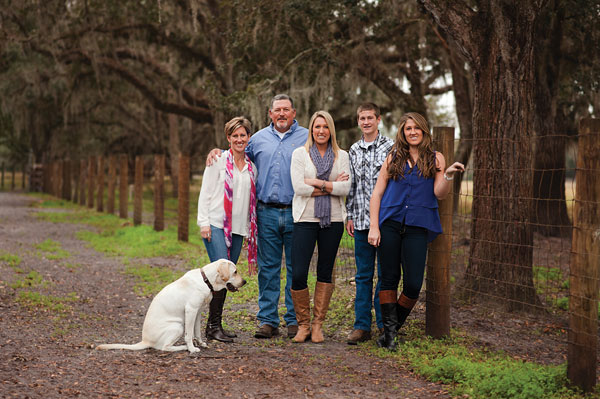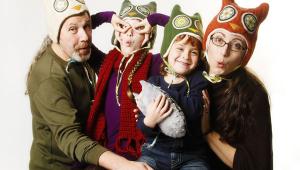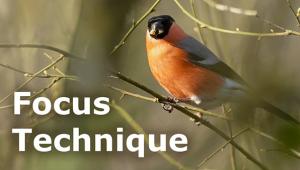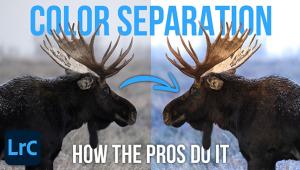I was supposed to buy is this one but I settled for the other model nonetheless it was still worth it
Photo Social Media Marketing: Blogs, Tweets, Postings & More
Does using social media as a marketing tool work for photographers? That’s what we aimed to find out by interviewing five photographers who have successfully used this particular marketing technique in very specific ways. Unlike advertising and direct mail, where you send out your material and wait for a response, and sales calls, which are more time-consuming, social media is a unique technique that can breed success, but only when properly and fully utilized. Many thanks to our photographers for taking the time and attention to share their thoughts and experiences (websites at end of column): Liz Cowie, Clark Dever, David Alan Kogut, Brad Mangin, and Chuck St. John.

Shutterbug: Specifically, how have you used social media to market your photography business?
Brad Mangin: I have done a little bit of everything for years on Facebook, Twitter, and my blog, but what really made it for me was when I started using Instagram a year ago. I had seen cool Instagram images shot by other photographers and learned about the social networking features it had, but it did not make much sense to me until I downloaded it and started messing around. Using my iPhone, I would capture baseball images from spring training in 2012 while on assignments for Sports Illustrated in Arizona.
At first, Instagram was just a fun thing to do besides my regular shooting—arriving on location, I felt like a newborn photographer looking at everything through the lens of my phone and the square format of Instagram. And I loved this marketing aspect of creating an online community and posting to followers. In July 2012 Sports Illustrated ran six pages of my Instagram photos in an unprecedented photo spread and it got a lot of attention. Shortly after that I talked with my agent and by September I had a book deal in place. I then went on to shoot the World Series and other events to add Instagram images to the book.
By October 2012 we had an entire book due out April 2013, Instant Baseball: The Baseball Instagrams of Brad Mangin, published by Cameron + Company. Sure, people love it because it is baseball but when you are a freelance photographer, you don’t get book publishing deals that often, so this was not just about sharing some cool photos, this was business. I owe this entire book project to Instagram photo sharing and social networking. And now, after consulting with Apple, we are planning an e-version of the book that will be available in the iTunes Store.

Chuck St. John: Primarily I use LinkedIn. I find that users are there to do business whereas users on Facebook have to dance around the whole “I want your business” issue. Facebook will get some collateral interest for me but LinkedIn will get me qualified people since they’re there for the same reason I am.
David Alan Kogut: I have used social media (primarily Facebook) to showcase current images that I have taken or to showcase projects I am currently working on. I use Facebook because of its ease of use. It has a nice platform to display current work that includes descriptions and hyperlinks.
I use LinkedIn primarily as a resumé, showing areas of photographic expertise or educational background. I primarily use Twitter for text-based information and have not experimented with sending images. I do link my Twitter account with my Facebook account so when I post on Twitter it copies to Facebook.
Liz Cowie: I use social media in a variety of ways, depending upon what site I am on. Facebook, for me, right now is my most valuable tool. It allows me to post images so potential clients see my work. I hope to deliver that “wow” factor with each image. The beauty of Facebook is that it allows me to tag people so that, not only my fans, but all of their friends see my work also. Social media also allows me to advertise special deals and sales that I might be offering. For me, it boils down to this: exposure. I want the visual exposure for my work, but more importantly I want to expose my personality. I find that I use Twitter and Facebook to express little blurbs of my personality. I want a potential client to connect with me, to interact with me, to relate to me. In this business of photography your connection with your client is paramount. The deeper the connection, the better the photographs. I see Pinterest as a site that could really provide some amazing photographic exposure and I hope to delve deeper into that as more of my own work gets “pinned.”
Clark Dever: In 2009, I used Twitter, Facebook, and a blog to garner international media coverage on a self-assignment project. We flew around the country to 30 cities in 31 days on a JetBlue ticket special. The trip was planned by our fans and followers through tweets, comments, and posts. Because Twitter was just starting to be utilized by the mainstream media, our tweets generated a lot of media coverage. Our social media-based fans hosted us in cities where we didn’t know people. We blogged about our experiences and over the course of the project had a quarter million unique visitors to our blog. The project was called Twelve Hours in a City and was featured on CNN.com, Time.com, and an article distributed by the Associated Press (AP). The combination of social media and traditional media led to the real success of this story. This launched my career as a photographer in my local market (I was a web developer in Buffalo, New York) with lots of local media coverage that exposed me to my corporate events and editorial clients.

SB: Why do you think social media marketing provides real results?
David Alan Kogut: That’s easy, because I have established working relationships with people who I most likely would not have had the opportunity to connect with. I connect with people who are outside my normal circle of colleagues. I am able to connect with people because they commented on a photo or liked a page and I was able to reply to them directly and establish a rapport. I have gotten requests for work based on what they have seen on Facebook. This has worked for obtaining clients not just domestically but interest has arrived from all around the world. I have also been able to use a matrix for measurement by analyzing my website stats and I can see that traffic comes from Facebook.
Chuck St. John: It’s more immediate than any other marketing tool I have used before. You can contact a qualified prospective client directly, particularly on LinkedIn, and you’ll get a reasonably quick reply.
Clark Dever: It creates a sense of engagement between the brand and the fan. We’re social creatures and interpersonal contact creates a lasting impression. Another Facebook Group that I created, ASMP Western New York Photo Chat, created dialogue between local photographers. It has improved our local market conditions by providing a forum to discuss best business practices with emerging artists.
Liz Cowie: Because I have the clients to prove it! I just finished shooting a beautiful wedding this past weekend. How did I find my client? I didn’t…she found me via a friend of a friend on Facebook who had commented on one of my images. She looked at my photos, decided that she liked what she saw and contacted me. And after posting images from her wedding, another potential bride has already contacted me about photographing her wedding. Furthermore, if it were not for my participation in a discussion thread on LinkedIn then you would not have found me for this interview. Bingo—success! It doesn’t happen overnight, though; you have to be patient. I certainly am not getting calls every single day from social media but they do come along. My company is young and growing. I am willing to be patient, especially since the only investment it takes is my time.

SB: How do you measure whether social media marketing pays off? What are your criteria?
Clark Dever: I ask clients how they heard about me when I’m first contacted. Different social networks appeal to different clients. I also use bitly.com to see click-through rates on my tweets. I hear commentary from customers about how much they love seeing my newest photos on Facebook and this allows me to do really effective follow-up responses.
Chuck St. John: Bookings! I know this sounds like a broken record but Facebook types of social media really require you to be more indirect about something photographers are really bad about—that is actually asking for work. Media like LinkedIn is more direct because it was built to be used as a job-networking site.
David Alan Kogut: I can see it is worth the investment in time by the response I get through the networking channels. I have received projects through people on Facebook. I have been recognized at events and have been approached. If people follow me in the social network channels they already have an idea about me so that networking and selling new work is one step closer. I have obtained clients in New York, Los Angeles, Florida, Hawaii, and outside the U.S.A., in Canada and Montenegro. I measure the traffic that Facebook or LinkedIn drives to my website by checking the stats on my SEO pages. I can see that people are seeing work on Facebook and then clicking the website link and getting to my current website where more information resides. I can see what the best times are to post on Facebook—both by what day and what hour of the day works best. The biggest measure is the bank account.
Liz Cowie: I don’t use or have any fancy statistics or questionnaires to gauge the success of my social media marketing. I simply ask my clients how they found me. More often than not, they saw me on Facebook. I do know that for me I would rather invest my time with Facebook over Twitter. It is harder to interact with people on Twitter, while on Facebook you can really start a conversation. I also really like the idea of Pinterest because I know that is mostly populated by women. Women are usually the driving force behind booking a family portrait photo session and certainly the driving force behind hiring a photographer for their wedding.

SB: How much time should you expect to spend and how much does your social media marketing return on investments of time and money?
Chuck St. John: Right now, the only outlay I have is for LinkedIn so a couple hours of assignment work pays for the whole year. Friends of mine have tried that $5 Facebook marketing effort with poor results so I stay away from that one.
Clark Dever: I try not to spend more than an hour on social media (personal and business) throughout the day. You quickly reach a point of diminishing returns. Automate where you can and then batch process your outgoing data streams. I don’t automate responses to mentions; I use bufferapp.com which allows me to batch process my social media marketing efforts, releasing content that I’ve curated in the morning over the course of the entire day. The only time I’ll keep consistently engaged in social media is when I’m at a conference or participating in time-sensitive conversations.
Liz Cowie: This is the million-dollar question, isn’t it? The time investment that is needed to maintain the plethora of your social media sites could indeed become a full-time job. This is why it is critical to pick a few sites to be active and engaged in at first. You can always add more. I do spend perhaps a couple of hours a day interacting with Facebook, Twitter, and LinkedIn. The beauty of these sites is that they are mobile so that I can interact or post when I have those moments of time when I am out and about. My company budget right now does not afford me the luxury of using paid advertising, so my sole source of marketing is social media. Let me tell you…I am busy!
David Alan Kogut: Social networking has become a “standard” part of my daily routine. I dedicate at least an hour every morning to specifically scan and comment, or upload new pictures. I check SEO stats and see if any traffic has been driven to my website. I may also dedicate time during the day to update status or upload additional content. I also end the day with an hour of scanning Facebook, LinkedIn, and Twitter to data mine for contacts and build rapport with possible clientele. I tend to leave the Facebook app open throughout the day and tweet on occasion during the day. I now have an assistant who will be managing social media to market constantly. I have used a different series of content such as BLAST from the PAST, A Moment in Time where I uploaded images to Facebook and have a short synopsis of what the image represents or the history behind it. I will also be using Facebook/Twitter/LinkedIn to launch a book I am working on now.

SB: What are the most important “dos and don’ts” you have learned about social media?
Brad Mangin: Do not be afraid to jump in! Social media is not going away and ignoring this new way to get your name out there is just stupid. I have been in business 20 years so I am not some kid who grew up in this “Internet generation” but I know this is both our present and future for marketing photography. Instagram helped put the joy back into photographing everyday things for me. I am inspired every day by looking at Instagrams that others have shot via my feed.
Chuck St. John: Nothing you say disappears. This almost goes back to being a parent where you really need to think twice about what you want to say. It’s really easy to offend someone if you’re not really clear and, above all, polite.
David Alan Kogut: Be careful to not get “sucked” in and spend too much time on extraneous conversations and content unrelated to marketing goals. Make sure you are displaying things frequently. Take the time to data mine people of interest otherwise the time is a waste. Have a specific goal in mind when targeting an audience. Give some useful information and not just showcase work.
Liz Cowie: I can only tell you what works for me, so try these things: post a single image on Facebook as opposed to an album; tag people and businesses; interact with your followers; always make positive posts; watermark your images; follow up immediately with requests for bookings; comment on the work of other photographers; make posts that ask a question so that people will interact with you; join forums where you can interact with other professionals in your field; be sure to have links to all your social media sites on your main website and e-mail communications; be yourself and let your personality shine!

Takeaways
• Use a variety of social media depending upon what sites target your clients.
• Find people who you would not normally have the opportunity to connect with.
• Interpersonal contact helps people remember you and builds on traditional marketing tools.
• Keep track of your links and click-through rates on all your social media (see bitly.com).
• Link your social media accounts to each other and to your traditional marketing tools.
• When people follow you and already have an idea about you, selling becomes “warm” calling.
• Use social media apps that are mobile so that you can interact or post anytime.

Web Resources
Our Contributors
Liz Cowie
www.lizcowiephotography.com
Clark Dever
www.clarkdever.com
David Alan Kogut
www.davidalankogut.com
Brad Mangin
www.manginphotography.com
www.sportsshooter.com
http://tinyurl.com/abuao7v
(Instant Baseball)
chuck st. john
www.stjohn.net

More Web Resources
ASMP
http://asmp.org/free/guide-mdeg
Bitly
https://bitly.com
Buffer
www.bufferapp.com
Mashable
www.mashable.com
NPAA (Brad Mangin)
https://nppa.org/node/27177
Social Media Today
http://socialmediatoday.com/lizalton/1254386/10-smart-ways-use-social-media-skyrocket-your-customer-loyalty
Spokal
www.getspokal.com/step-6-getting-started-on-social-media-for-small-businesses
Tricycle
www.tricycle.com/feature/ten-mindful-ways-use-social-media
Further Reading
Hubspot
http://blog.hubspot.com/blog/tabid/6307/bid/6126/The-Ultimate-Glossary-120-Social-Media-Marketing-Terms-Explained.aspx
Mangin Photography
http://manginphotography.net/2012/07/how-i-made-instagram-images-that-were-good-enough-for-sports-illustrated
The Technium
www.kk.org/thetechnium/archives/2008/03/1000_true_fans.php
Wired
www.wired.com/rawfile/2012/10/instagraming-playoff-baseball
- Log in or register to post comments

















































